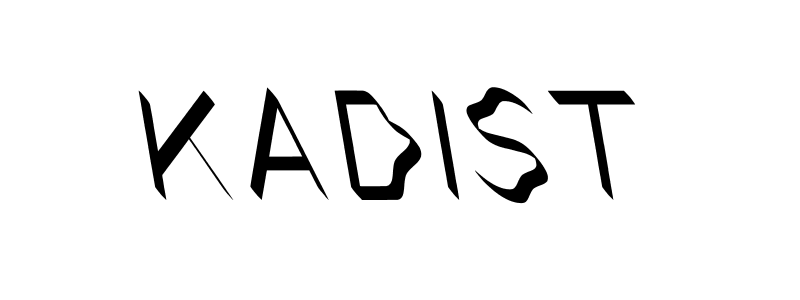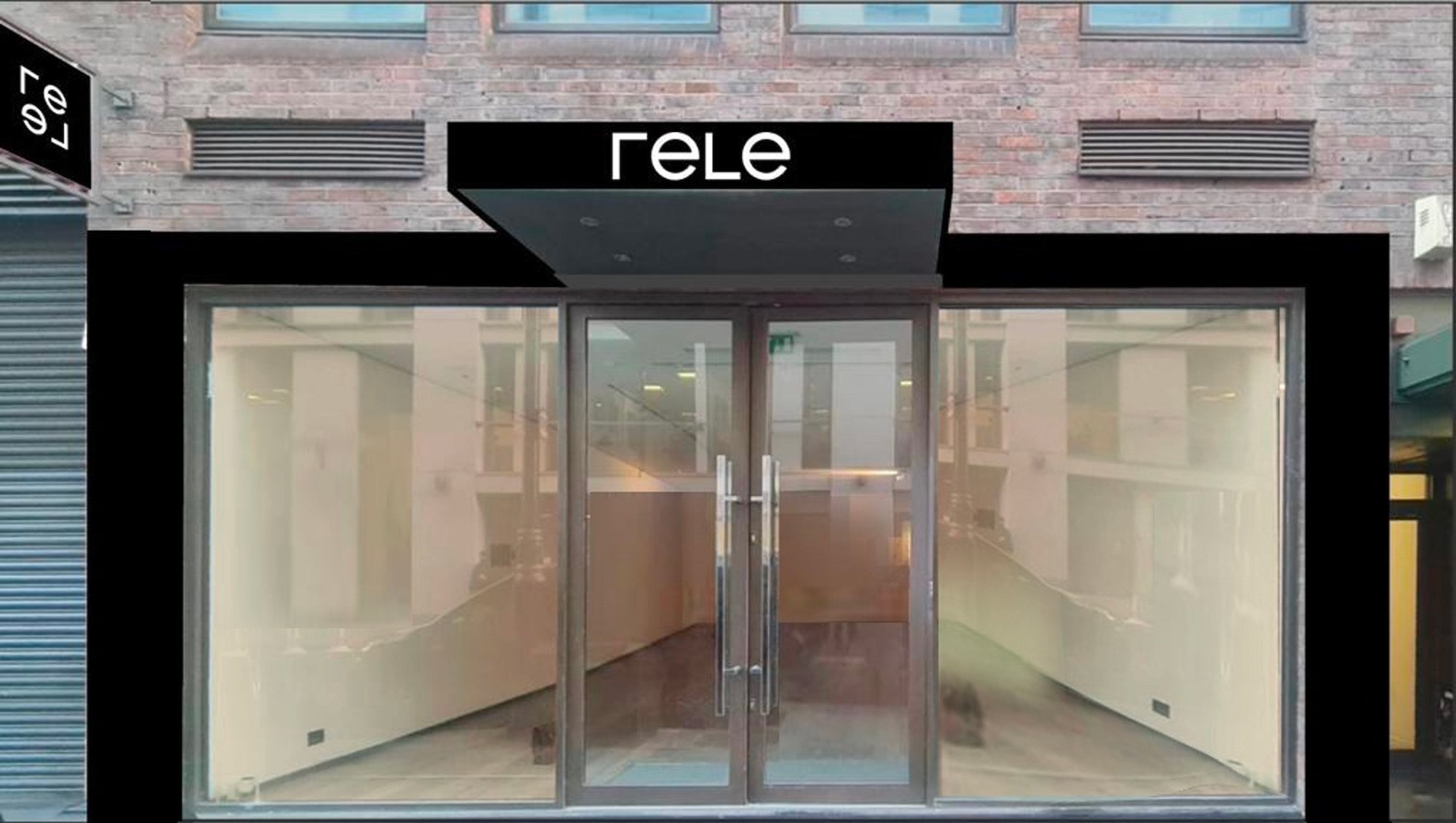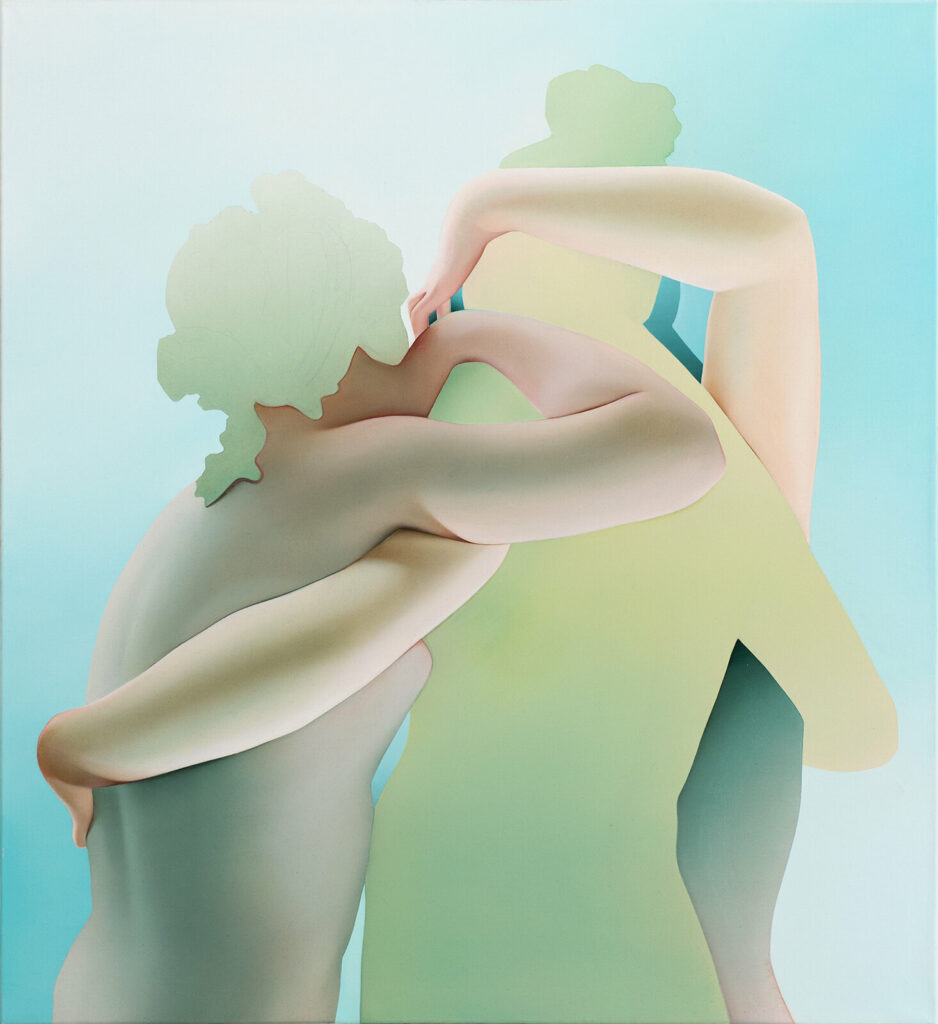Untitled (Ruby Downing sitting between two Unidentified Men in a Room), Damaged series
2003 - Drawing & Print (Drawing & Print)
33 x 48 cm
Lisa Oppenheim
The Damaged series by Lisa Oppenheim takes a series of selected photographs from the Chicago Daily News (1902 – 1933) as its source material. For this project, Oppenheim procured the original glass negatives, which had been damaged over time, from the archives of this newspaper. She then printed the negatives as is, highlighting the multitude of physical flaws that had ‘spoiled’ the negatives. Pairing these distorted and decaying images with their original newspaper captions, the abstracted images and specificity of the texts collide, opening up the imagery to new and imagined interpretations. Struggling towards clarity, the patterns and forms contained within the images are only defined by the positive and negative (black and white) spaces of the compositions. For example, Untitled (Ruby Downing Sitting Between Two Unidentified Men in a Room) depicts an amorphous congregation of pools and splotches. With the context muddied by time, the detailed caption provokes questions and considerations concerning the protagonists and context of the imagery—who is Ruby Downing? What room? Why was this a newsworthy event? Similarly, Untitled (Joseph T. Robinson Standing at a Podium in a Room) presents only a frenetic constellation of almost pixelated spots, like static on a screen. While, Untitled (Governor of Ohio Judson Harmon) illustrates a fluid, almost gaseous ball of energy, like a fire set ablaze. Embracing the physical erasure of the content, Oppenheim’s project underscores how temporal distance changes the interpretations of a historical event, while also demonstrating how what is considered newsworthy shifts over time
Lisa Oppenheim’s artistic practice is rooted in a research-based methodology that focuses on the intersection of images, their sources, and their contexts. Working predominantly in photography, the artist frequently references library, collection, documentary, and online archives as resources for her projects that are marked by both their conceptual and aesthetic complexity. Visually, her images embrace fragmentation, exposures, substitutions, and other physical manipulations that reveal the nuanced mechanics and chemistry of the photographic medium, its history, and theory. Merging strategies of appropriation and recontextualization, Oppenheim reconstitutes past and present by assigning new meanings to historical imagery, records, and materials. Bound up in the expansiveness of photography’s trajectory, Oppenheim’s project consider the process, modes of consumption, and circulation of photography.
Colors:
Related works featuring themes of: » Abstract Photography, » Americana, » Appropriation Art, » Collective History, » American
» see more

© » KADIST
Karl Haendel
2011Haendel’s series Knights (2011) is a set of impeccably drafted, nine-foot-tall pencil drawings depicting full suits of armor...

© » KADIST
Juan Capistran
2002The Breaks reflects Capistran’s interests in sampling and fusing different cultural, social, and historical sources...

© » KADIST
Juan Capistran
2012The 10 $1 bills that make up From a Whisper to a Scream (2012) read like instructions in origami...
Other related works, blended automatically
» see more

© » KADIST
Lisa Oppenheim
2003The Damaged series by Lisa Oppenheim takes a series of selected photographs from the Chicago Daily News (1902 – 1933) as its source material...

© » KADIST
Karl Haendel
2011Haendel’s series Knights (2011) is a set of impeccably drafted, nine-foot-tall pencil drawings depicting full suits of armor...

© » KADIST
Juan Capistran
2002The Breaks reflects Capistran’s interests in sampling and fusing different cultural, social, and historical sources...
Related works sharing similar palette
» see more

© » KADIST
Taiyo Kimura
The wall installation Friction/Where is Lavatory (2005) plays off anxieties about time but utilizes sound to create a disconcerting experience of viewership: comprised of dozens of wall clocks sutured together, the work presents a monstrous vision of time at its most monumental...
Related works from the » 2000's created around » New York, New York
» see more

© » KADIST
Gregory Crewdson
2005Forest Gathering N.2 is part of the series of photographs Beneath the Roses (2003-2005) where anonymous townscapes, forest clearings and broad, desolate streets are revealed as sites of mystery and wonder; similarly, ostensibly banal interiors become the staging grounds for strange human scenarios...

© » KADIST
Glenn Ligon
2000Glenn Ligon’s diptych, Condition Repor t is comprised of two side-by-side prints...

© » KADIST
Ari Marcopoulos
2008In Jackass (2008) by Ari Marcopoulos, his two sons, Cairo and Ethan, are pictured relaxing in a disheveled bedroom in their Sonoma home...

© » KADIST
Trisha Donnelly
2007Untitled is a black-and-white photograph of a wave just before it breaks as seen from the distance of an overlook...
Other works by: » Lisa Oppenheim
» see more

© » KADIST
Lisa Oppenheim
2003The Damaged series by Lisa Oppenheim takes a series of selected photographs from the Chicago Daily News (1902 – 1933) as its source material...

© » KADIST
Lisa Oppenheim
2003The Damaged series by Lisa Oppenheim takes a series of selected photographs from the Chicago Daily News (1902 – 1933) as its source material...
Related artist(s) to: Lisa Oppenheim » Elad Lassry, » Lawrence Weiner, » Matt Keegan, » Okwui Enwezor, » Amanda Ross-Ho, » Amy Granat, » Andrew Kuo, » Anne Collier, » Claire Fontaine, » Dexter Sinister
» see more

© » KADIST
Claire Fontaine
2006Foreigners Everywhere is a series of neon signs in several different languages...

© » KADIST
Elad Lassry
2013In his composition, Chocolate Bars, Eggs, Milk, Lassry’s subjects are mirrored in their surroundings (both figuratively, through the chocolate colored backdrop and the brown frame; and literally, in the milky white, polished surface of the table), as the artist plays with color, shape, and the conventions of representational art both within and outside of the photographic tradition...

© » KADIST
Elad Lassry
2013In establishing a deliberate distance between viewer and subject, Lassry raises questions about representation itself and how all portraits are, in effect, fully constructed objects that only gain meaning once we ascribe them with our own personal associations and emotions...

© » KADIST
Elad Lassry
2012The black-and-white photograph Men (055, 065) (2012) depicts two similarly built young men – young and slim, with dark tousled hair and a square jaw line – seated aside one another in identical outfits...
Related works found in the same semantic group
» see more

© » KADIST
Chris Duncan
2010Taken from the title of the incredibly influential punk/hardcore record I AGAINST I by the Bad Brains, Untitled (blue) is an acrylic painting on reflective paper by Chris Duncan is part of a larger body of work titled EYE AGAINST I ...

© » KADIST
Alicia McCarthy
2010A painting reminiscent of a certain “naive primitivism,” Untitled (Colors) and Untitled (Ghost) are representative of McCarthy’s work...







